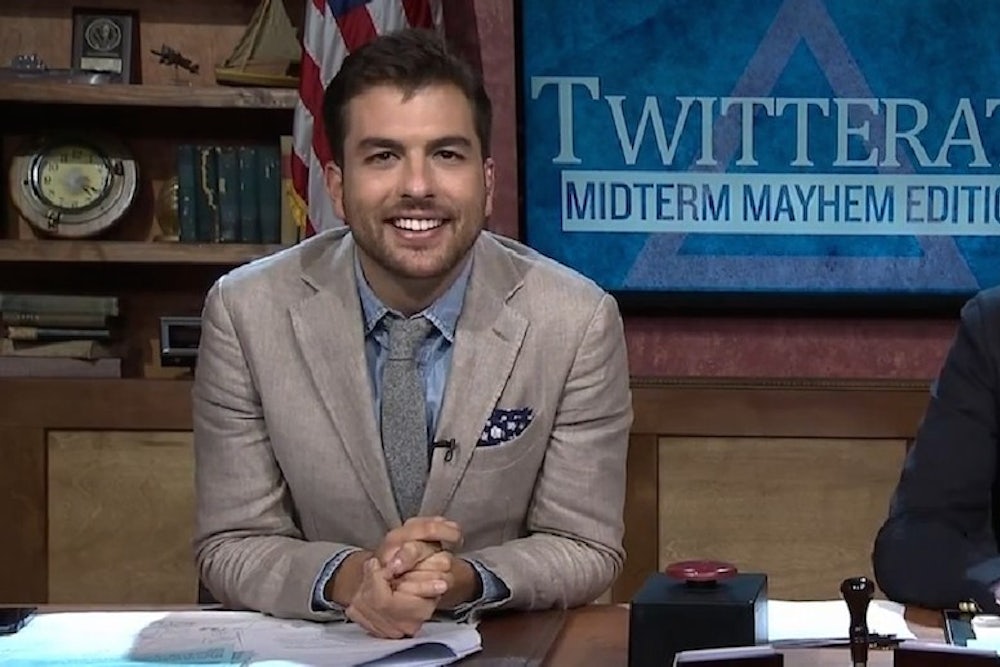For most news networks, election night is a time to solidify one’s image and unveil new technologies. CNN had its usual flashy stunts, and the flashiest was the Empire State Building, which they lit up in red and blue as the results came in. Fox News had actual fireworks and, earlier in the night, Megyn Kelly, proudly waving around a thick briefing book like a student eager to show how much she’s prepared. On Bloomberg TV, John Heilleman and Mark Halperin offered the savvy Beltway insider’s take. And then there was Fusion: The year-old, little-seen cable news network aimed at millennials celebrated election night with two hours of dirty jokes and puppets.
With only 20 million cable subscribers, Fusion has gotten more attention for its hiring spree of of big-name online journalists—including Felix Salmon, Anna Holmes, Margarita Noriega, Alexis Madrigal, and Kevin Roose—than for anything it airs. Launched last October as a collaboration between ABC and Univision, the network has high ambitions to be the go-to news channel for a multi-cultural, multi-ethnic generation of viewers. (It was originally conceived as a network for young, English speaking Latinos, but later broadened its focus—executives last year described it as “winking at Hispanic.”) “In 2016, no one is going to be able to make it to the White House without Fusion and without Univision,” its star anchor Jorge Ramos has said. In the meantime, they have Kal Penn, star of Harold and Kumar Go to White Castle.
Penn—also a former White House staffer—co-hosted the “Midterm Mayhem” election night special along with the network’s Nando Vila, and the duo pitched themselves as “The Daily Show”’s younger, more stoned brother. Make that very stoned kid brother. “Is Jeanne Shaheen the coolest name in the Senate?” Penn asked Vila, drawing out the rhyme. “[Which candidate] has the biggest proverbial nut sack?” they asked one of Fusion’s political correspondents, who responded with Mitch McConnell. “I think about Mitch McConnell’s nut sack frequently,” Vila mused. The night was filled with jokes like this, about nuts and balls and dicks. Interviews with real correspondents—including the newly hired Madrigal, who offered some genuinely interesting tech commentary—were mixed in with appearances by puppets, racing turtles, and the voice of God. It’s a pity: Ramos, known for his confrontational interview style is an impressive journalist, as is anchor Alicia Menendez. But if I didn’t also have Tweetdeck open, I’m not sure if I would have learned much about the election results.
More depressingly, there was almost no sense that any of this mattered. While there were ex-“Daily Show” staffers among the program’s writers, there was almost none of the idealistic cynicism of that show, which invites the viewers to share Jon Stewart’s frustration with the political system’s absurdities. Instead, the cynicism here was empty, borne of the idea that young people want their political coverage with as little politics as possible. If that’s the case, they’re better off watching sitcoms on election night.
Correction: This article misidentified Fusion's director of social media. Her name is Margarita Noriega, not Margaret Noriega. It also misspelled anchor Jorge Ramos's first name.
